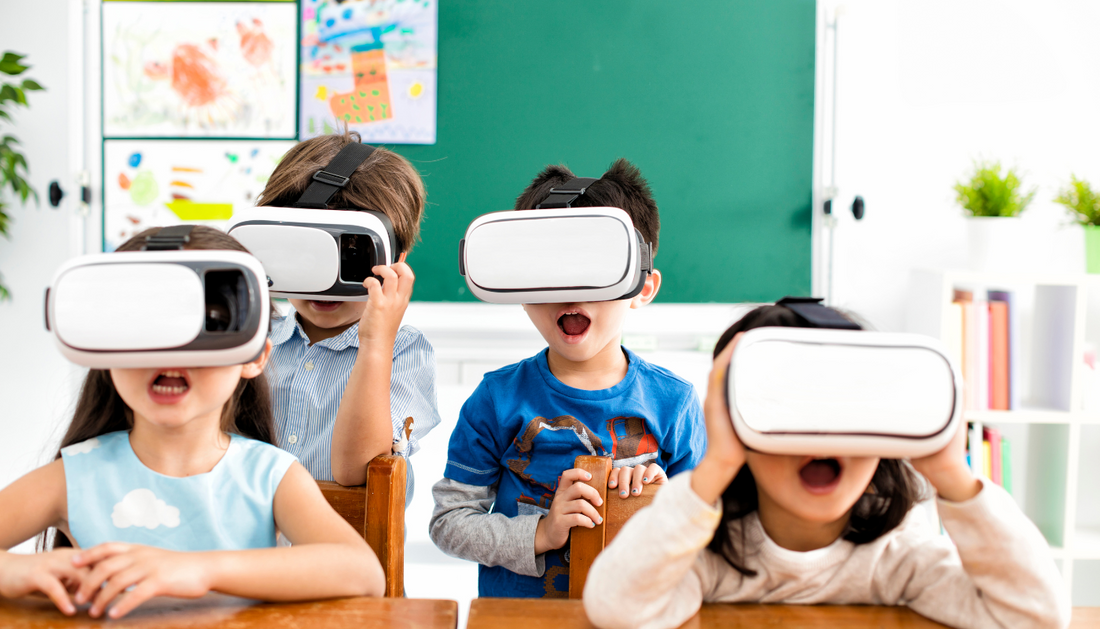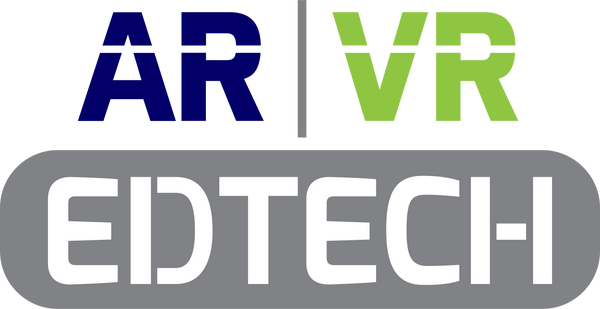
Why You Should Use Virtual Reality In The Classroom
Share
Virtual reality has been shown to be an effective tool in a number of different settings, from businesses to entertainment. But what about education? In this article, we'll explore how virtual reality can be used in the classroom to enhance the learning experience for students of all ages.
1. Travel to and explore places all over the world without leaving the classroom.

Virtual reality has a lot to offer when it comes to education. For one, it can take students on virtual field trips to places all over the world without leaving the classroom. This can be a great way to learn about other cultures and history. It can also be used to teach science concepts by allowing students to explore different environments, such as the inside of a volcano or the bottom of the ocean. Additionally, virtual reality can be used to provide students with hands-on experience with difficult concepts or dangerous situations that would otherwise be inaccessible.
2. Develop empathy for communities in crisis by stepping into their shoes.
Virtual reality is an incredible tool for developing empathy and understanding for others. By immersing yourself in another person's reality, you can begin to understand their challenges and experiences in a much deeper way. This is especially important in the classroom, where students are often exposed to different cultures and worldviews. Virtual reality can help students develop a greater understanding and respect for others, which is essential for creating a peaceful and productive world.
3. Experience different careers first-hand.

There are a number of reasons why using virtual reality in the classroom can be beneficial for students. One of the most impactful advantages is that it allows students to experience different careers first-hand. With VR, students can explore what it would be like to work in a variety of jobs and get a better sense of what they might be interested in pursuing as a future career. This can be especially beneficial for students who may not have access to certain job opportunities in their local area. VR can also help students to better understand the skills required for certain jobs and what kind of training might be necessary. Overall, using VR in the classroom can give students a more well-rounded and realistic view of the working world, which can ultimately help them make more informed decisions about their future career paths.
4. Explore the depths of the ocean and the vastness of space.
Virtual reality is an amazing tool that can be used to teach students about a variety of topics. By using virtual reality, students can explore the depths of the ocean, the vastness of space, and even the inside of a human body. Virtual reality can also be used to teach history, allowing students to experience what it was like to live in another time period. The possibilities are endless!
5. Time travel to key events and places from the past.

When it comes to teaching, there are few tools more powerful than virtual reality. VR allows students to time travel to key events and places from the past, giving them a first-hand look at history in a way that is both immersive and interactive.
There are already a number of VR applications available that can transport students to different eras and locations. One popular example is Google Expeditions, which takes students on virtual field trips to places like the Great Barrier Reef or the Coliseum in Rome.
Using VR in the classroom has a number of benefits. First, it can help engage students who might otherwise be bored by more traditional methods of instruction. Second, it gives students a more active role in their learning, as they are able to explore different environments and interact with them in a variety of ways. Finally, VR can provide a more inclusive learning experience for students with disabilities or those who are unable to travel to certain locations.
If you're looking for a new way to engage your students and bring history to life, consider using virtual reality in the classroom.
6. They can explore the human body.
Virtual reality can be used in the classroom to take students on a tour of the human body. Using VR, students can explore the different systems of the body and learn about how they work together. This hands-on approach to learning can help students better understand the material and retain information.
7. Allow students to share their world with others by creating their own VR content.

Virtual reality provides an immersive experience that can transport students to different places and times. It can also be used to create simulations of real-world scenarios, making it an ideal tool for education. VR can help students learn by giving them a hands-on way to explore new concepts and ideas. It can also be used to allow students to share their world with others by creating their own VR content.
8. Explore how VR can be integrated into every subject area and curriculum.
There are many reasons to consider using virtual reality (VR) in the classroom. For one, it can provide an immersive experience that can help students learn and retain information in a way that is not possible with traditional methods. Additionally, VR can be used to supplement existing curriculum or be used as a standalone tool for instruction. Here are some examples of how VR can be used in the classroom:
Science: VR can be used to take students on field trips to places they would otherwise be unable to visit, such as the inside of a volcano or the bottom of the ocean.
Math: VR can be used to visualize complex concepts and equations that may be difficult to understand with traditional methods.
Language Arts: VR can transport students inside a story, allowing them to experience it in a way that is not possible by just reading text on a page.
Social Studies: VR can take students back in time to experience historical events firsthand or visit other cultures without leaving the classroom.
Integrating VR into the classroom can provide numerous benefits for both students and teachers. If you are considering using VR in your classroom, there are many resources available to get started.
There are many reasons to consider using virtual reality in the classroom. VR can help students learn by providing immersive, hands-on experiences that are otherwise difficult to recreate in a traditional classroom setting. Additionally, VR can be used to supplement existing lesson plans and curriculum, making learning more engaging and interactive. If you're looking for a way to add an extra dimension to your teaching, virtual reality could be the perfect solution.
Thank you for visiting ARVRedtech.com. If you liked this information, please share it with a friend. You can also sign up for our newsletter to receive the latest information in AR and VR in education and beyond. If you know of an app, service, or company using augmented reality in travel, or virtual reality in education that we should feature here, please contact us using the contact form, we would love to hear from you.
